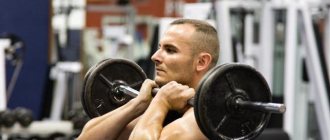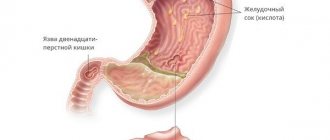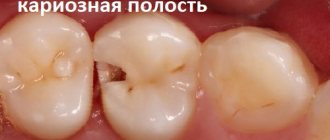Question "Why does my butt hurt?
"is a very sensitive topic, so many people try not to tell anyone about the pain that regularly occurs in one of the buttocks. Meanwhile, pain in any part of the body can be a symptom of a serious illness, and hiding such problems is too dangerous for one’s own health.
The buttocks, which are popularly called the butt
, consist of skin, muscle tissue and subcutaneous fat, which is the most developed. And in order to understand what caused the pain in the buttock, it is necessary to determine its nature and place of occurrence. After all, pain in the buttocks can be different: on the left side of the buttocks or on the right, on both sides, radiating to the leg, stomach or pelvis.
Female body
structure is more complex than that of men. In women, the organs necessary for bearing a child are located below the lower back, so the subcutaneous fat layer and muscles in the buttocks are more developed than in men. The reason for this is to protect the reproductive organs and fetus from stress during pregnancy. Therefore, if any pain in the buttocks occurs, women should first of all visit a gynecologist to rule out the presence of gynecological problems and pathology of organs located in close proximity to this part of the body.
Often on regular pulling
or
acute pain
in the left side of the buttock, women over 50 years of age who have been diagnosed with partial or complete prolapse of the uterus complain.
The left or right side of the buttock can also hurt due to a bent uterus, uterine fibroids or ovarian tumors. With these pathologies, pain appears not only in the lower abdomen, but also in the pelvis and sacrum. Inflammation of the sciatic nerve is called sciatica and is often the cause of pain in the buttocks.
Men have pain in the buttocks.
usually caused by the following reasons:
1. Intervertebral hernia
. Pain radiating to the buttock is a frequent accompaniment of intervertebral hernia in the lumbar region, lumbosacral osteochondrosis or scoliosis. Pain in these diseases occurs not only in the buttocks, but also spreads to the lumbar region and tailbone, and often extends to the leg. When walking and physical activity, the pain increases sharply.
A neurologist should diagnose such conditions
. Only he can help get rid of pain in the buttocks by establishing an accurate diagnosis based on the results of computed tomography and radiography, prescribing treatment with anti-inflammatory drugs, courses of massage and physiotherapy. In severe cases of a herniated disc, symptoms of which include numbness and difficulty urinating and defecating, surgery may be required.
2. Sciatica
. Spasm of the gluteal muscles is often caused by neuralgia of the sciatic nerve - sciatica. There are two sciatic nerves in the human body, both of them originate from the lumbar region and are the largest in length. These nerves branch in the pelvic area and stretch all the way to the heels.
Sciatica develops due to compression of the nerve roots
with displacement of the vertebrae, inflammation and damage to the tissues surrounding the sciatic nerve, as well as the appearance of a tumor. With sciatica, pain affects not only the buttocks, but the entire body. It becomes especially acute when sitting and moving quickly. Treatment of sciatica includes a set of exercises, massage and hot injections, which should be prescribed by a doctor.
Damage, arthrosis of the hip joint often manifests itself as pain in the buttock
3. Damage to the muscles and ligaments of the hip joint
. If there is pain inside the buttock, then painful sensations in a delicate place occur while sitting, standing or walking.
Cause of pain
in this case, there is a violation of the nutrition of muscles, ligaments and bones due to the development of atherosclerosis and diseases of the hip joint. These diseases most often occur with age as a result of the development of degenerative changes in bone and muscle tissue, and the appearance of problems with blood circulation.
Both prolonged sitting and increased stress
on the spine can cause poor circulation of muscles and joints, while pain in the buttocks is aching in nature. People who sit at a table in an uncomfortable position for a long time, engage in intense physical activity and lift weights especially often suffer from pain in the buttocks.
Dystrophic disorders in articular cartilage
Not only men, but also women are susceptible to spinal column and hip joint problems. Treatment of pain in the buttock in these cases should include special exercises aimed at restoring the back muscles, improving blood supply and nutrition to the joints. Physical education for spinal deformities is extremely necessary; without restoring muscle tone, it is impossible to establish blood circulation in the cartilage, which leads to pain in the buttocks.
The best prevention for buttock pain
, as with all other muscles of the body, are regular walking, morning exercises and swimming. They help maintain body tone and improve blood circulation. If the work involves sitting in the same position for a long time, it is necessary to do small warm-ups every hour.
Sometimes pain in the buttock
appears after an injection, due to the development of subcutaneous inflammation of adipose tissue - phlegmon. In this case, unbearable pain is felt when sitting, and a swelling or lump appears at the injection site. Treatment of bumps and hematomas after an injection involves the use of alcohol compresses and small iodine nets, and if abscesses occur, it is necessary to take antibacterial drugs or remove them surgically. Boils may also appear in the buttocks - cone-shaped elevations with a purulent core.
In severe cases, boils
also cause acute pain in the buttock, and they often have to be removed surgically.
Main reasons
Pain in the buttock cannot be ignored , so it is important for a person to listen to his feelings and try to determine the disease that caused it.
It is important to note that in order to make an accurate diagnosis and prescribe appropriate treatment, it is necessary to consult a specialist.
Irina Martynova. Graduated from Voronezh State Medical University named after. N.N. Burdenko. Clinical resident and neurologist of the Moscow Polyclinic. Ask a question>>
Lumbosacral osteochondrosis
Description of the disease
It is characterized by the destruction of the cartilage tissue of the intervertebral discs, due to which the spinal column ceases to support the body, and the tissues of the deformed discs put pressure on the nerve endings.
Nature of pain
In this case, a person feels aching pain in the buttock when walking, intense physical activity, abruptly getting up from a place, awkward movements, or a cold. The following symptoms are often associated with the pain syndrome:
- pain in the sacrum and hips;
- feeling of overstrain of the gluteal muscles and muscles of the lower extremities;
- limited mobility of the lower extremities;
- decreased sensitivity of the skin.
Diagnosis and treatment
If you suspect osteochondrosis of the lumbosacral region, the patient must go to a neurologist who will conduct an examination, prescribe an X-ray and computed tomography.
If the diagnosis is confirmed, anti-inflammatory drugs, physiotherapy, massage, and acupuncture are prescribed as treatment.
Sciatica
Description of the disease
Sciatica (piriformis syndrome, sciatica, sciatic neuralgia) is a condition that is associated with pinched and inflammatory processes of the sciatic nerve . Watch a video about this:
Sciatica is not a disease, but one of the symptoms that can be caused by any reason, from osteochondrosis to hypothermia.
Accordingly, when treating sciatica, it is necessary not only to suppress its symptoms, but also to eliminate the root of the problem.
Nature of pain
The pain syndrome in the case of sciatica can be of a different nature: unbearable, debilitating pain or mild discomfort, but in any case, the sensations intensify over time. With sciatica, discomfort spreads to one buttock and a symmetrical limb (its back surface); it hurts a person to sit and stand for a long time.
Diagnosis and treatment
To clarify the diagnosis, the patient must consult a vertebrologist. Diagnostic measures include an external examination, MRI and CT scan of the spine, X-rays, and electroneuromyography. Therapy is selected depending on the cause of the disease: physical therapy for the spine, acupressure, and in difficult cases, surgical treatment.
To eliminate symptoms, painkillers, anti-inflammatory drugs, and antispasmodics are used.
Intervertebral hernia
Description of the disease
Intervertebral hernia is the result of advanced osteochondrosis , as a result of which the intervertebral disc is destroyed, and in its place there is a proliferation of fibrous tissue, inflammation and the deposition of calcium salts. A deformed disc irritates the nerve endings passing through it and causes discomfort.
Nature of pain
The pain is sharp, strong, felt only on the right or left side. A characteristic sign of an intervertebral hernia is that discomfort begins in the lower back, after which the pain radiates to the buttock and femoral part of the leg. Subsequently, the following symptoms appear:
- weakness in the limbs;
- impaired skin sensitivity on the buttocks;
- feeling of "goosebumps";
- disturbance of urination and defecation.
Diagnosis and treatment
A neurologist or orthopedist is involved in the treatment of intervertebral hernia; patients are prescribed X-ray examination, CT and MRI.
Doctor – neurologist, city clinic of Orenburg. Education: Orenburg State Medical Academy, Orenburg.
Myositis
Description of the disease
Myositis is an inflammatory process in the muscles that occurs as a result of acute respiratory viral infections, autoimmune diseases, chronic infections, hypothermia, and injuries. It has several varieties, but the buttocks usually hurt with myositis ossificans.
Nature of pain
With muscle inflammation, pain is felt in the buttock when walking, most often mild, pulling or aching in nature.
Subsequently, upon palpation of the affected areas, characteristic swelling and then compaction are felt, and the pain usually subsides at this stage.
Diagnosis and treatment
A specialist for myositis is chosen depending on the cause of the disease: if it is a consequence of injury, you should contact a traumatologist, but if the cause lies in infectious diseases, you should consult a therapist. Treatment tactics depend on the stage and advanced stage of the disease. Anti-inflammatory non-steroidal drugs, warming ointments, physical therapy, and massage are usually used. In some cases (if suppuration occurs), surgical intervention is necessary.
Purulent-inflammatory processes
Description of the disease
Purulent processes in the internal tissues of the buttocks can occur for various reasons , including: entry of pathogenic microorganisms (usually staphylococci) into an open wound, decreased immunity, metabolic disorders, hypothermia, injection of chemicals under the skin.
- Abscesses. Cavities filled with pus that look like boils of varying sizes.
- Phlegmon. Subcutaneous inflammation of adipose tissue in the form of swelling at the site of the lesion.
- Boils. Acute inflammation of hair follicles, sebaceous ducts and surrounding tissues, which have the shape of cones with purulent contents.
- Osteomyelitis. A purulent-inflammatory disease that affects not only the gluteal tissues and muscles, but also the bones. This is a life-threatening condition that can lead to coma and death, so if you have the slightest suspicion of the disease, you should immediately consult a specialist.
Rheumatologist - city clinic, Moscow. Education: FGBNU NIIR named after V.A. Nasonova, Astrakhan State Medical Academy.
Accordingly, if it is necessary to administer drugs, you should contact qualified healthcare professionals - this will minimize pain in the buttocks and more serious problems.
Nature of pain
In inflammatory diseases, the pain is usually sharp and acute. The patient feels pain in the buttock when sitting, and when touching the affected area, the discomfort intensifies. Often the patient’s temperature rises, headaches appear, and general health worsens.
Blood flow disturbance
Aseptic necrosis of the femoral head
Description
Aseptic necrosis of the femoral head is a severe chronic disease, which is caused by poor blood circulation in the femoral area and provokes destruction of the bone tissue of the femoral head.
Nature and location of pain
The pain is localized in the groin or thigh, sometimes in the knee. Appears after loading the joint, goes away after a long rest, but immediately appears with repeated loading.
Additional symptoms
Patients experience lameness, limitation of movements, and with long-term illness, disproportion of the limbs and muscle atrophy appear.
Attending physician: traumatologist-orthopedist
Diagnosis and treatment
To fully diagnose this disease, it is necessary to use MRI or CT. At an early stage, the x-ray does not show any abnormalities. The main task is to differentiate this disease from others with similar symptoms. Biochemical analysis of blood and urine is also used to determine the degree of disease.
Conservative treatment is effective only at an early stage. In this case, drugs are prescribed that improve blood circulation and bone restoration, anti-inflammatory drugs, and muscle relaxants. The course of treatment includes therapeutic exercises, a strict orthopedic regimen and electrical muscle stimulation.
Surgery is performed if drug treatment is unsuccessful.
Long-term compartment syndrome
Description
Long-term compartment syndrome (LCS) occurs as a result of prolonged exposure to soft tissue and subsequent resumption of blood circulation. Usually the cause of SDS is accidents, landslides and accidents.
Nature and location of pain
The pain is localized in the damaged area of the body and depends on the cause of the lesion.
Additional symptoms
Pallor of the skin, numbness of the limb, signs of circulatory problems. Additional symptoms appear some time after blood circulation is restored. The skin becomes purple or bluish, and hemorrhages form.
Attending physician: traumatologist-orthopedist
Diagnosis and treatment
Diagnosis of SDS is carried out on site; if the patient is under rubble, the likelihood of developing this syndrome is very high. The longer the compression, the greater the danger to human health, even death. Therefore, it is very important to provide first aid correctly. If compression lasts less than 2 hours, the patient must be immediately released and treated with associated injuries, and given pain relief. For a longer period, before release, a tourniquet should be applied to the affected limb, released and bandaged tightly, after which the tourniquet is removed and a painkiller can be administered. Further treatment is carried out by specialists depending on the consequences.
Impaired blood flow in the iliac artery
Description
The iliac arteries are located at the bottom of the abdominal region. When they narrow, blood circulation in the lower part of the body is disrupted, pain symptoms arise, and in extreme cases leads to gangrene.
Nature and location of pain
Aching pain is localized in the extremities and can spread from the upper thigh to the foot.
Additional symptoms
The disease may be accompanied by lameness, ischemia, and convulsions.
Attending physician: phlebologist
Diagnosis and treatment
For diagnosis, methods of auscultation, thermography, sphygmography, rheovasography, and oscillography are used. For treatment, ganglion-blocking and vasodilating drugs, rheopositive therapy, anticoagulants and antiplatelet agents are used.
With the surgical method, indirect bypass operations are most often used.
First aid for pain in the buttocks
To alleviate the patient’s condition before he is consulted by a doctor, the following measures must be taken:
- limit physical activity;
- take a position in which the least pain will be felt;
- massage the sore area with light movements;
- take a pain reliever (“Analgin”, “Diclofenac”, “Ketanov”, “Dolaren”);
- if the pain is caused by a bruise, apply a cold compress to the affected area;
- if there is an open wound on the surface of the skin, treat it with an antiseptic;
- if the pain syndrome is caused by an unprofessional injection, you can draw an iodine mesh on the buttock or apply an alcohol compress;
- if there is a boil or other formation with purulent contents, make a compress from Vishnevsky ointment or ichthyol ointment.
If the pain in the buttock does not go away for a long time or is accompanied by other symptoms, you should consult a doctor as soon as possible.
Muscle pain, like any other organ or system, is a response to a pathological process or a symptom of fatigue. Pain in the gluteal muscles is no exception; there are many reasons.
Why the tailbone and buttocks hurt, and what to do about it
coccydynia
The pain usually occurs with prolonged sitting and intensifies when a person gets up from a chair. In addition, pain may occur during bowel movements, contributing to constipation. In advanced cases, patients with pain in the coccyx and buttocks complain of pain spreading to the groin area.
Treatment of coccydynia comes down to the use of physiotherapeutic procedures such as ultrasound treatment, UHF therapy ( exposure to high-frequency magnetic waves on the skin
), laser treatment (
using a laser with a fixed wavelength
).
In some cases, paraffin applications ( a method of heat treatment using heated paraffin
) or exposure of the rectal mucosa to high-frequency pulsed currents are indicated. If conservative treatment does not produce positive results or if a fracture or dislocation of the coccyx is detected, surgical treatment is prescribed to remove this segment of the spinal column. It is worth noting, however, that this operation does not always give a positive result.
Due to leading a sedentary lifestyle, most of us are familiar with the problem of lower back pain, which in turn can also spread to the buttocks. Of course, pain in this area does not pose any threat to us, but its appearance is a signal about any existing disorders in the body. In this article we will tell you about what can cause this disease.
Two-wheeled friend
Many reasons can cause the body to react. One of the most common activities during the spring and summer is cycling. All, without exception, lovers of two-wheeled friends, have encountered the problem of pain arising after a trip.
Uncomfortable saddle
Cycling around the city and cycling in nature entail significant physical activity on the entire body, and the gluteal muscles in particular. All muscles located in the butt area are involved in this process.
One of the reasons for pain in the buttock after cycling can be an uncomfortable saddle. The bicycle seat may not be suitable according to anatomical parameters (too hard or soft, wide or narrow, inappropriate angle of inclination). The solution to this problem is the right choice and professional installation, which a specialist will help you figure out.
Principles of treatment of muscle tissue diseases
The main rule of treatment is to rely on the results of your own research. After the consultation, the doctor will form an idea of the disease and prescribe treatment. Therapy can be conservative in nature, based on external methods of influence, taking pills. If the disease is purulent in nature, spreads along the leg, affecting the thigh, reaching the knee, surgery cannot be avoided. If the disease has already affected a limb, amputation is common.
Depending on the pathology, treatment occurs either quickly or vice versa - the degree of development, genetic history of the patient, age, and past illnesses are taken into account. If your butt pain is caused by an infection, get rid of the infection. In case of injury, rub the skin near the muscle at the back - that’s the treatment.
If the pain does not stop, single methods of relief do not help, the symptom has developed into a serious illness, ignoring it is making it worse for yourself. If the disease spreads throughout the body, and not only the buttocks and legs hurt, sound the alarm so as not to end up in a wheelchair.
The following causes of pain in the gluteal muscles are distinguished:
- Myositis
is a pathological process in which muscle tissue becomes inflamed.
The cause of myositis can be the penetration of infection into the muscles against the background of influenza or sore throat, after bruises or wounds in the gluteal region, due to hypothermia or after physical strain. In some cases, muscle inflammation can occur due to stress or be of an autoimmune nature ( the immune system secretes antibodies to its own muscle tissue
). Pain with myositis intensifies with movement or when pressing on the affected muscle. It is worth noting that the pain makes itself felt not only while walking, but also at rest. In addition to pain, with myositis there is stiffness in the hip joint, which is associated with pathological tension of muscle tissue. In some cases, new muscles may be involved in the pathological process. - Physical overexertion
can lead to increased muscle tone in the buttocks and manifest as nagging pain. Most often, this can be observed in untrained people after a long walk or after intense exercise. Quite often, this muscle pain is localized not only in the buttocks, but also in the lower back and thigh. - Intramuscular injection,
if performed incorrectly, can lead to the formation of a compaction (
infiltrate
), which compresses the muscle tissue, leading to their pathological tension.
This complication occurs when drugs are administered quickly, or if the injection is not deep enough or in the wrong quadrant of the buttock ( the injection is given in the outer upper quadrant of the buttock
). - Sitting for long periods of time
can also lead to muscle pain in the buttocks. The fact is that when sitting for a long time, the blood vessels of the gluteal region are compressed. As a result, a decrease in arterial blood flow to the buttock muscles causes pain.
Relationship with other diseases
Cycling is not the only cause of buttock and muscle pain. The occurrence of this problem can be triggered by the following processes:
- osteochondrosis of the lumbar spine;
- osteochondrosis of the lumbosacral spine;
- an attack of radiculitis (a pepper patch will help);
- pathological process of intervertebral discs;
- inflammatory diseases of the hip joint;
- osteomyelitis of the ilium or femur;
- spinal column injuries (whether the bone is affected or not);
- inflammation of the sciatic nerve (severe pain);
- inflammation of the ovaries in women;
- pathological processes of the rectum;
- myositis;
- benign and malignant neoplasms (pains unbearably).
Reason 1. Spinal diseases
The buttock often hurts due to diseases that are associated with spinal dysfunction:
Lumbosacral osteochondrosis
As a result, the pain is aching and intensifies when walking or exercising. Pain often appears when standing up. However, in addition to severe pain in the buttock, there are other symptoms of this disease: discomfort in the hip, lower back, sacrum; muscles acquire increased tone. A neurologist can diagnose this disease. He will send the patient for a CT scan and X-ray. If the diagnosis is confirmed, then anti-inflammatory medications, massages and physiotherapy are prescribed as treatment.
Hernia between vertebrae
Severe pain in the buttock may be the result of an intervertebral hernia. The first unpleasant sensations appear in the lower back. Gradually the pain radiates to the buttock and leg. Typically, patients report pain on either the left or right side. Often “goosebumps” appear in this place. And as a consequence of the disease, urinary retention occurs, as well as a serious violation of bowel movements. A neurologist and orthopedist will make such a diagnosis only after an examination consisting of X-rays, magnetic resonance imaging and computed tomography. Treatment in this case is prescribed either conservative or surgical. It depends on the severity of the disease.
Radiculitis
Any pain that is caused by pinching or irritation of the spinal cord nerve roots is a manifestation of this particular disease. Most often they occur in the vertebrae, buttock, and spread to the leg. In addition to pain, a movement disorder also occurs, and skin sensitivity decreases. If it hurts in the buttock or any other place, the doctor prescribes anti-inflammatory and painkillers. Radiculitis itself is not a diagnosis. It can be caused by some other disease, which the doctor must identify and treat.
Symptoms
Each person perceives pain differently. For some, the pain is expressed as pressing. Others experience burning, tingling, fatigue, or pain that is piercing and unbearable. Muscle fatigue accumulates.
If the cause of the pain is a minor injury or fatigue, the painful symptom occurs suddenly and can also stop suddenly.
If pain in the buttock is accompanied by one or more of the symptoms listed below, it is important to quickly seek advice and medical help. These manifestations include:
- swelling, hematomas;
- limitation of range of motion;
- chromate;
- pain in the lumbar region;
- numbness in the muscles;
- weakness and fatigue in muscles;
- loss of sensation in the gluteal region;
- blood in the stool;
- weakness, tired legs;
- the bone aches;
- paralysis.
Pinched sciatic nerve
Pain in the upper part of the buttocks is accompanied by pinching of the sciatic nerve. Excitation of nerve tissue causes compression of the nerve.
Among the ailments that provoke pinching are::
- Herniated intervertebral discs;
- Osteochondrosis;
- Spondylolisthesis;
- Stenosis;
- Spinal injuries.
A common cause is also considered muscle spasm, causing sharp pain in the buttocks. Plus, a tumor or infection of the sciatic nerve.
Signs of the disease
Experts say that when the sciatic muscle hurts, this is the main sign of pinching. Pain sensations appear in the lower back, flow into the buttocks, thigh, lower leg, heel and end in the big toe.
Numbness of the buttock and other related organs often occurs. The pain may increase, sometimes causing burning or tingling.
Any rough movement, heavy lifting, and even coughing can increase pain symptoms in the lower back and buttocks. Aching pain leads to difficulty walking and sitting. Due to pinching, the muscles weaken, therefore, it becomes difficult for a person to simply stand.
Treatment options
To make a diagnosis, the doctor will need a routine examination, but for a full confirmation, the patient is prescribed an ultrasound, X-ray and MRI . If a specialist doubts anything, for example, there is a suspicion of the presence of another ailment, he will take blood and urine for tests.
Acute pain in the buttocks and lower back does not allow a person to fully move. If the sciatic nerve is pinched, the doctor prescribes bed rest for a week. To relieve inflammation, anti-inflammatory medications are prescribed, and painkillers are prescribed to relieve pain. Based on the severity of the disease, the doctor will also determine how the medications will be administered.
In case of severe pinching, the patient will be prescribed a steroid course of drugs or an anesthetic blockade.
If buttock pain is caused by spasms, the doctor will give preference to drugs that can improve blood circulation.
Complications after the injection
Along with very complex and dangerous processes occurring in the body, pain in the gluteal muscle can occur after intramuscular injections. Injections of vitamins and a number of antibiotics are considered very painful.
If the pain does not go away within 24 hours after the injection, it hurts even more, you can suspect the following pathological symptoms.
- An abscess caused by a violation of the rules for diluting the drug (the powder is diluted only with distilled water).
- Malicious non-compliance with injection rules.
- Introduction of a pathological process from outside into the injection wound.
- The needle gets into the vessel during manipulation.
- The needle gets into the nerve trunk (the complication is very serious and requires long-term treatment).
- The appearance of a subcutaneous infiltrate due to the fact that the medicine is injected not into muscle, but into adipose tissue.
What are the causes of pain in the gluteal muscles?
The buttock is a complex organ of our body, which, in addition to muscles, includes skin and fatty tissue.
Pain syndrome in it can occur due to injuries, diseases of the spine, hip joint, and many other reasons.
There are not so many direct muscle diseases, so if the gluteal muscle hurts, it is not difficult for an experienced specialist to make a diagnosis.
Why does pain appear in the gluteal muscles?
Muscle pain most often occurs as a result of overwork or inflammation and rarely extends beyond the buttock. When the gluteal muscles hurt, the reasons are as follows:
Myositis
Myositis is characterized by muscle inflammation, which occurs against the background of sore throat, flu, radiculitis, as a result of hypothermia or excessive stress, as well as due to a long stay in an uncomfortable position.
Sometimes the disease develops due to severe cramps that occur while swimming. Its main symptom is muscle pain that increases during movement or when pressing on the affected area.
The disease is often accompanied by additional symptoms:
- skin hyperemia;
- muscle weakness;
- decreased performance;
- stiffness in the hip joint.
If left untreated, myositis can progress and affect neighboring organs, so in cases where the gluteal muscles hurt, it is recommended to visit a medical facility.
Physical exercise
Excessive tension in the gluteal muscle leads to pain, which is not dangerous and goes away on its own.
Soreness may appear after sports activities, lifting loads, or heavy work (for example, clearing snow). It usually bothers untrained people and is associated with increased muscle tone.
In some cases, physical activity leads to pain in the gluteal muscle, radiating to the leg or lower back.
Curvature of the lumbar spine
When the configuration of the spine is disrupted, a change in muscle tone occurs. Due to the curvature of the spinal column, some muscles become too tense, while others, on the contrary, stretch and relax. Visually, such a deformation goes unnoticed, but leads to pain.
Intramuscular injections
Banal injections often cause discomfort, which usually goes away on its own. If pain in the gluteal muscle persists for a long time, several possible causes are considered:
- Incorrect injection. Pain occurs if the needle gets into blood vessels or nerve trunks. The result is a bruise that disappears over time. If the hematoma is too large, treatment may be required. Usually it consists of physical procedures carried out as prescribed by a doctor. Sometimes, when injecting, the needle gets into the fatty tissue, which leads to the formation of a lump and pain.
- Violation of sterility rules by medical staff. If, during an injection, a healthcare worker does not properly treat the injection site or uses unsterile equipment, an infection may develop in the buttock. Sometimes the pain does not subside for a long time if the injection powder was diluted in undistilled water.
- Violation of sterility by the patient. The unpleasant itching that sometimes occurs after the injection forces the patient to scratch the injection site. If he does this with dirty hands, he can also introduce an infection into the wound.
Other reasons
Among other reasons why the gluteal muscles hurt, the following conditions and pathologies are considered:
- fibromyalgia;
- primary or secondary myalgia;
- polymyositis;
- prolonged stay in an uncomfortable position, which leads to compression of blood vessels;
- stress and psychological stress that increase muscle tone.
Pain during pregnancy
The condition when the gluteal muscles hurt during pregnancy is considered a fairly common occurrence. The reason for this may be various processes:
- muscle strain due to an enlarged uterus;
- decreased elasticity of the ligamentous apparatus of the pelvis, which increases the load on the lower back and gluteal muscles;
- compression or pinching of the sciatic nerve - in this case the thigh, sacrum and upper third of the buttock hurt;
- a shift in the center of gravity, which entails a change in posture and muscle load.
Women with weak back and abdominal muscles, as well as those who are obese or overweight, are most susceptible to such phenomena.
Pregnancy
In some cases, a woman’s “interesting position” can provoke noticeable pain in the buttock. The following processes can cause pain.
- The muscles of the lumbar spine, buttocks, pelvis, and legs experience additional heavy stress due to the growth of the uterus and an increase in its weight.
- Compression of large and small vessels by the growing uterus located in the pelvic cavity.
- Compression of nerve trunks.
- My leg cramped.
The pain is especially severe at the end of the term, at 36-40 weeks of pregnancy. The painful sensations are sharp, shooting in nature. May resemble the pain of radiculitis.
Piriformis syndrome
Piriformis syndrome due to injuries of the lumbar spine. It occurs very often - approximately 30-40% of those who apply for hip pain.
The disease is often unilateral (right or left). The pain increases quickly, most often within 1-3 days, after unsuccessful movement, heavy lifting or strong emotional experience, stress. In some cases, the attack is preceded by acute or chronic pain in the lower back. The greatest intensity of pain in piriformis syndrome is observed in the buttock area; the sacrum and lower back may hurt at the same time; in some cases, the pain can go down along the back of the leg, all the way to the heel. Unlike coxarthrosis, pain very rarely radiates to the groin - and in any case, with piriformis syndrome, pain in the buttock will be much stronger than groin pain.
Pain in the buttock can be severe both during the day and at night. Sometimes it is difficult for a patient to find a comfortable position in the first half of the night, and sometimes a sick person wakes up from pain at 3-4 am. However, in half of the patients, pain occurs only when moving and walking. In this case, there is no restriction of movement in the hip joint when rotating the leg: the leg rotates in full. But then, acute pain often occurs in the lower back or in the gluteal region when trying to lift a straightened leg or lean forward while standing with straight legs. Piriformis syndrome is caused by damage to the lumbar spine >>>
Diagnostics
If pain in the buttock and muscles does not go away without treatment within 1-2 days, and tends to spread and increase, this will be a reason to consult a doctor for advice and clarify the question: “What is the cause of the pain? What hurts?"
The doctor will first of all collect an anamnesis of the disease: find out when, why, and with what frequency the gluteal muscles hurt.
With visual and palpation examination, you can determine:
- dependence of pain on posture;
- muscle tone;
- sensitivity;
- mobility;
- What does fatigue look like?
Additional biochemical tests and samples are carried out to most accurately determine the location of the lesion and find out why it hurts.
To identify concomitant diseases that may cause this symptom, a number of additional studies need to be carried out.
- X-ray of the spine (can detect: injuries, disc displacement, developmental anomalies, osteochondrosis and/or tumor processes).
- Computed tomography of the spine (reveals the same causes as x-rays, but is more informative).
- Magnetic resonance imaging (adjacent soft tissues are examined).
- Scintigraphy (allows you to detect metastases, abscesses, osteomyelitis).
- Clinical analysis of blood and urine (presence of inflammation and/or rheumatism).
- Electroneuromyography (assessing the tone and innervation of the gluteal muscles).
- Ultrasound diagnostics.
- Puncture of the affected area (prescribed strictly according to indications if a tumor process is suspected).
Pathologies of the hip joint
Arthritis
Description
Arthritis is an inflammation of the hip joint , which can lead to its deformation and impaired motor functions.
Nature and location of pain
There is a sharp, severe pain in the groin area, which intensifies during rest, as well as when turning the leg.
Additional symptoms
There is also swelling around the affected joint in rheumatoid arthritis. Psoriatic arthritis is characterized by blue discoloration of the skin. With purulent arthritis, swelling of the joint appears in a purplish hue, fever and increased sweating are observed. With gout, mobility is impaired, redness and a local increase in temperature appear.
Attending physician: rheumatologist, traumatologist
Diagnosis and treatment
Arthritis is diagnosed through examination and subsequent laboratory tests. First of all, blood and urine tests are prescribed, then x-rays are taken. Ultrasound, CT, MRI, arthroscopy, and myelography are also used.
Treatment for arthritis depends on its type and stage. In most cases, antibiotics, anti-inflammatory drugs, and muscle relaxants are used. Drugs that promote the restoration of cartilage tissue are also used.
In the case of an extreme stage, when it is not possible to cure the disease with medication, surgery is used to replace the damaged joint.
Arthrosis
Description
A degenerative change in the cartilage tissue of the joint, which leads to its deformation and impaired motor function.
Nature and location of pain
There are three stages of arthrosis. In the first stage, the pain is aching, appears after loading the joint and goes away after rest, and is localized in the joint area. In the second stage, the pain does not go away during rest and occurs much more often, the location and nature of the pain do not change.
The last stage is characterized by severe pain that increases with any movement.
Additional symptoms
In addition to painful sensations, a crunching sensation in the joints is also observed, and swelling occurs during exacerbation. At the second and third stages, there is a limitation of mobility and amplitude in the diseased joint, muscle atrophy due to limited movement. In this case, the pain intensifies in a particular position.
Attending physician: rheumatologist
Diagnosis and treatment
For diagnosis, blood tests, radiography, CT, and MRI are prescribed. The main task is to differentiate arthrosis from arthritis.
For treatment, drugs from the NSAID group and chondroprotectors are used. Intra-articular corticosteroids are also used to relieve inflammation and hyaluronic acid to reduce friction. Physiotherapeutic treatment and exercise therapy are also prescribed. Osteoarthritis is treated surgically using several methods. In arthroplasty, diseased cartilage is replaced with artificial cartilage. Arthroscopy involves inserting a probe with a camera into the joint and removing problem areas.
As a last resort, prosthetics with replacement of the head of the joint is used.











